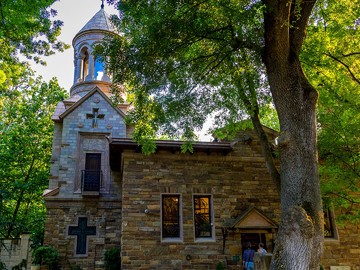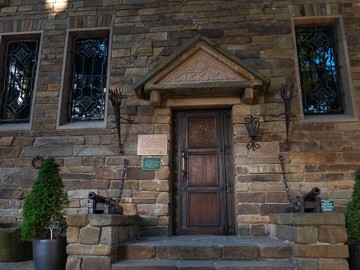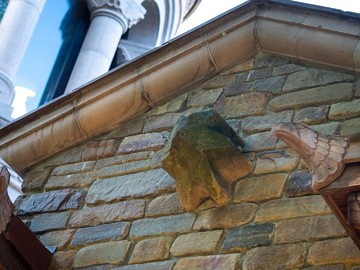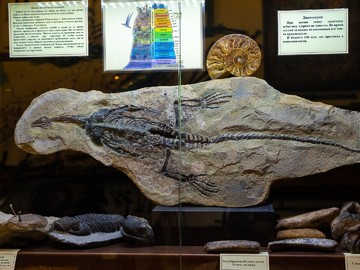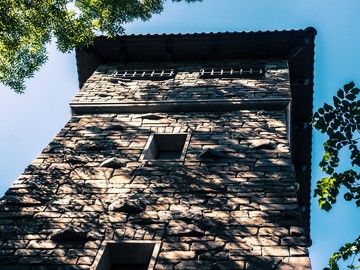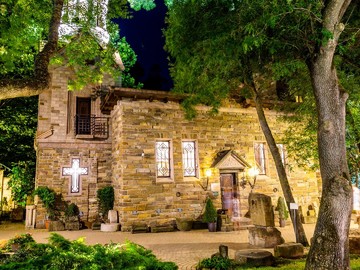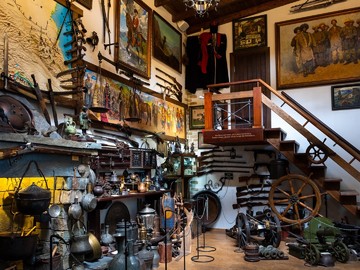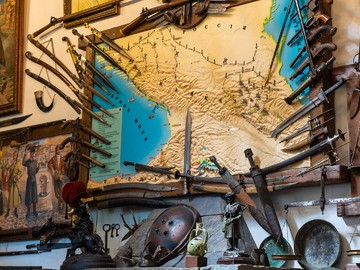This unique building combines three types of architecture: spiritual, civil and military. This form most accurately reflects the complicated history of the formation of the Caucasian peoples, their lives and survival.
It is no coincidence that two millstones, two man-made serrated stones stand on the way to the building like a gate. Millstones of history forged the nature of the Caucasian peoples, the history that was dictated to the small peoples by the great empires - the Roman, Byzantine, Ottoman, Persian, British and Russian. Their interests have always been weaved by the Caucasian knot. The motive and symbol of the Caucasian house is a fragment of a millstone, which, like a star, is imprinted in its main pediment.
We know little about the true history of the Caucasus as a region – unfortunately, less than about the history of Ancient Egypt. Indigenous peoples did not have written language. Probably, in the conditions of eternal wars and robberies there was no time for writing. The hand of a Caucasian never left a blade away.
And external sources, unfortunately, provide a very narrow superficial and subjective review. The House of the Caucasus forms its own approach to the history of the region. It is seeking for objectivity. It poses the cornerstone questions: Why did not dozens of nationalities form strong states? Why did all the imperial hands reach here? What is the Russia’s interest? What is its role in the history of the Caucasus and what is the role of the Caucasus in the history of Russia? The answer to them will not be unambiguous.

